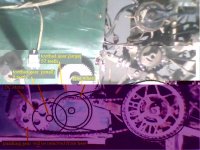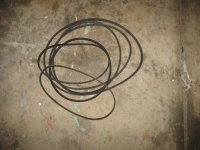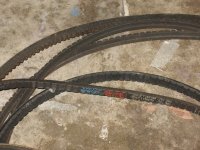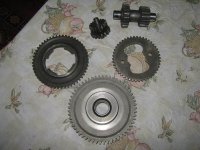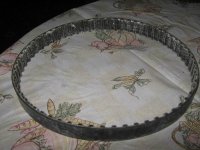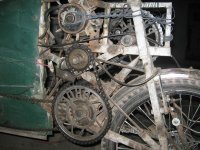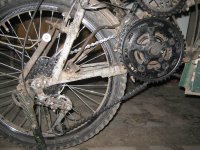numberonebikeslover
1 kW
Subject: Un-efficiency and Unreliability of Chain Drive system
It has been always been observed time and again that chain drive systems in electric bikes are unreliable and snap at odd hours.
Knowing the fact that a chain is as strong as its weakest link it is understood that there are as many possibilities of breaking of a chain as many links are there in it. Having a chain with 100 links would mean 100 possibilities of a chain to break or snap. So it concluded that:
1) Number of links of a chain = number of possibilities of chain breaking or snapping. Thus smaller the chain the reliable.
Having front and rear gear shifters/derailers at most of times (see the following figure) the chain goes through a number of zigzag twists and off alignment that it increase the chances of a chain to snap. There are only few gears where chain is aligned. So:
2) Front and rare derailers increase the chances of a chain to snap. Better solution for giving the rider the opportunity to change gearing ratio, probably a gearing box like a small bike e.g. Yamaha 50cc.
Note that the distance between both front and rare chain gears play a major role in this regard. Greater the distance between both gears greater will be tolerance of chain against zigzag un-alignment, as every chain link has very little room to bear zigzag twist/un-aligned situation. This tolerance increase with the number of chain links. (see the following figure)
3) During bumpy rides (off-road conditions) it again makes the chain with shifters / derailers more un-reliable.
4) Lubrication can’t stay on chains and makes it porn to catch dust and mud, which increase in its friction and power loss. Having energy crisis in the world the modern technology is after efficiency, thus chains seem to have very little room in modern technologies.
5) Chains if not lubricated in wet conditions, rust will deteriorate its life.
Keeping in mind the afore-cited facts I’ve the intentions of using gears instead of chains for gear-reduction. (see the following figure). I’m also working on a suitable solution for replacing gear-shifters.
You are all requested for comments and precious feedback.
Wish me luck guys.
It has been always been observed time and again that chain drive systems in electric bikes are unreliable and snap at odd hours.
Knowing the fact that a chain is as strong as its weakest link it is understood that there are as many possibilities of breaking of a chain as many links are there in it. Having a chain with 100 links would mean 100 possibilities of a chain to break or snap. So it concluded that:
1) Number of links of a chain = number of possibilities of chain breaking or snapping. Thus smaller the chain the reliable.
Having front and rear gear shifters/derailers at most of times (see the following figure) the chain goes through a number of zigzag twists and off alignment that it increase the chances of a chain to snap. There are only few gears where chain is aligned. So:
2) Front and rare derailers increase the chances of a chain to snap. Better solution for giving the rider the opportunity to change gearing ratio, probably a gearing box like a small bike e.g. Yamaha 50cc.
Note that the distance between both front and rare chain gears play a major role in this regard. Greater the distance between both gears greater will be tolerance of chain against zigzag un-alignment, as every chain link has very little room to bear zigzag twist/un-aligned situation. This tolerance increase with the number of chain links. (see the following figure)
3) During bumpy rides (off-road conditions) it again makes the chain with shifters / derailers more un-reliable.
4) Lubrication can’t stay on chains and makes it porn to catch dust and mud, which increase in its friction and power loss. Having energy crisis in the world the modern technology is after efficiency, thus chains seem to have very little room in modern technologies.
5) Chains if not lubricated in wet conditions, rust will deteriorate its life.
Keeping in mind the afore-cited facts I’ve the intentions of using gears instead of chains for gear-reduction. (see the following figure). I’m also working on a suitable solution for replacing gear-shifters.
You are all requested for comments and precious feedback.
Wish me luck guys.



